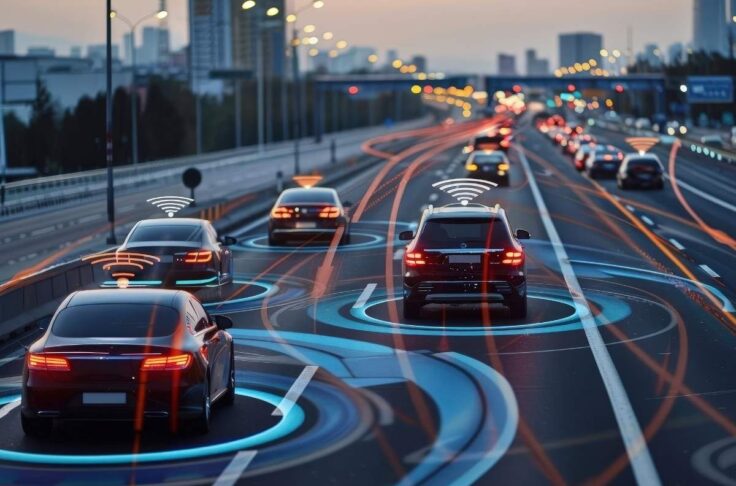The Importance of Electrifying Your Fleet
Summary
Corporations should lead by example and electrify their fleet and starting an automated motor pool system. By showing employees the ease of electric vehicles, barriers to adoption can be reduced.

Regardless of whether your fleet is part of the private or public sector, fleet management has undoubtedly evolved over the past five years. Priorities have shifted from going paperless in fleet purchasing to adapting to the mobility evolution (Fleet Financials). As a result, fleet managers are now reviewing the make-up of their fleet and trying to meet emission reduction goals, right-size their fleet, and more generally improve everyday fleet management.
One pertinent aspect of fleet management that has evolved is the need to electrify. With many parts of the world facing heat warnings this summer and congestion growing in cities, zero emission vehicles (ZEV) have been discussed as a way to reduce carbon emissions. As a result, it is important for corporate fleets to lead the shift in vehicle choice and help reduce the hesitations facing ZEV.
Electrification is Growing
Electric vehicles (EV) are expected to triple in global sales by 2020, especially as battery prices continue to decrease (Business Insider). Even with the increase of electric vehicles being produced globally, gasoline-powered vehicles, or vehicles with internal combustion engines (ICE), are still more prominent in fleets. They are cost competitive to their electric counterparts, have better range, and are even improving in fuel efficiency (CNN).
However, even as electric vehicles increase production, it seems unlikely they will fully replace gasoline-powered vehicles (CNN). As a result, it is critical for governments to enact laws and regulations to encourage the adoption of ZEV.
This year, nine states proposed a new action plan that would help achieve emission reduction goals. California, Connecticut, Maryland, Massachusetts, New York, Oregon, Rhode Island, Vermont, and New Jersey created this action plan to develop more funding for public fleet electrification, and tools to support fleet managers during the electrification process (Government Fleet).
This is an example of how states are getting behind the importance of electrifying. To make it easy for fleets to convert to zero emission vehicles, it needs to be easy and simple. State contracts and quantification of cost savings and benefits would also help make going electric an obvious choice for fleets (Government Fleet).
Overcoming Obstacles
Nonetheless, there will continue to be obstacles preventing a fast adoption of electric vehicles. Range anxiety, for example, is a prominent concern facing consumers and organizations alike. Even though electric vehicles like the Chevrolet Bolt can drive for at least 200 miles, people are still not convinced (Green Car Reports). The average number of miles driven in a day is less than 40 miles, but the need for emergency trips or ability to go on road trips hold people back from owning an EV (HowStuffWorks).
There are also misconceptions surrounding electric vehicles. Critics argue the production of EV cause more pollution than the production of gasoline vehicles due to the larger batteries. However, this is a narrow scope of comparison. Instead, the comparison must be done over a vehicle lifecycle. In this bigger picture, EV cause less pollution over its life because of its zero emissions, whereas gasoline vehicles continue to pollute whenever it is driven (FleetCarma).
Another misconception is the harming nature of the batteries once it is no longer usable. EV batteries are made of lithium-ion, meaning it can be recycled and reused much like cell phone batteries. As a result, these batteries can be smelted, go through a direct recovery cycle, or be repurposed as back-up power for street lamps (FleetCarma).
Corporate Responsibility
It is important for corporate fleets to electrify. Corporate fleets need to set an example that if a fleet can operate as zero emission, then so can a personal vehicle.
One way fleets can transition into full electrification is by using motor pools. Creating a zero emission motor pool achieves two goals: it allows the fleet to meet emission mandates while also right-sizing the fleet to meet utilization targets. As well, employees who have access to their organization’s fleet will be able to experience the benefits and ease of driving an electric vehicle.
When starting a motor pool, fleet managers typically evaluate the utilization of each vehicle. Often times, they find that individually or departmentally assigned vehicles do not meet the utilization thresholds that make owning that car feasible. Between depreciation and maintenance costs, underutilized vehicles provide ample room for improvement (Government Fleet).
As a result, starting a motor pool is an opportunity to re-evaluate the make-up of the fleet and introduce ZEV. By auctioning off underutilized vehicles, collecting government grants for the purchase of ZEV, and enjoying savings from reduced maintenance costs, having a green fleet becomes more affordable and cost-effective (FleetCarma).
With a zero emission motor pool, employees will have another reason to buy-in to the importance of no longer having a personally assigned vehicle. Having access to EV will allow employees to contribute to the organization’s emission reduction efforts, regardless of whether or not they are government-mandated. In addition, a green motor pool will not give employees the impression that it is not a cost-reduction effort, but one to better the environment.


